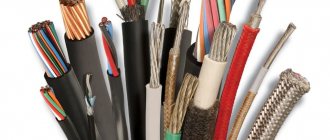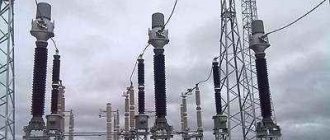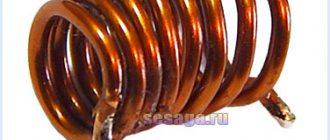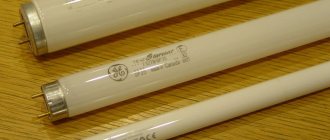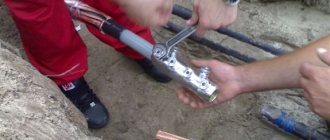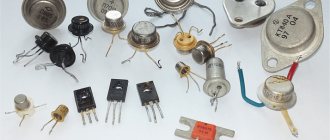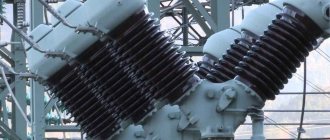Electrical wiring in a house or cottage serves to transport electricity to various types of electricity consumers: lighting fixtures, heaters, boilers, pumps, televisions, etc. All these devices create comfortable living conditions and have a wide range of power consumption from 10 W (shavers, DVDs) to 5 kW (boilers, electric boilers). The role of electrical wires is very difficult to overestimate. Further comfort and safety during operation depends on the correct choice of wire types for various consumer groups at the design and construction stage. Hundreds of meters of wires for various purposes are hidden in the walls of modern buildings, and they are all different - some are thicker, others are thinner, some have two cores, and some have three or more. Each wire has its own purpose (power wiring, lighting, signal cables, telephone cables, Internet) and is responsible for the operation of a particular electrical appliance. Of the many different types of wires and cables, in this article we will look at electrical wires and cables used in construction to transport electricity. Let's consider their varieties, brands and scope of application. Electrical wiring – consists of wires and cables with their associated fastenings, support and protective structures.
Electrical wires are produced in copper and aluminum. Copper wires have better conductivity than aluminum wires, but are also more expensive.
What is a wire?
A wire is one uninsulated or one or more insulated strands, over which there may be a non-metallic sheath, winding or braid of fibrous materials or wire. Wires can be bare or insulated. Wires can be used for power lines, for the manufacture of electric motor windings, for connections in electronic equipment, etc.
Bare wires do not have any protective or insulated coatings and are mainly used for power lines.
The cores of the insulated wires are covered with PVC, rubber or plastic insulation.
Installation wires - wires for low voltage electrical distribution networks.
Bare wires are those that do not have protective or insulating coatings on top of the conductive cores. Bare wires of the brands PSO, PS, A, AS, etc. are usually used for overhead power lines.
Insulated wires are those in which the current-carrying conductors are covered with insulation, and on top of the insulation there is a braid of cotton yarn or a sheath of rubber, plastic or metal tape. Insulated wires can be either protected or unprotected.
Protected wires are called insulated wires that have a sheath on top of the electrical insulation designed to seal and protect from external climatic influences. These include wires of the brands APRN, PRVD, APRF, etc.
Unprotected are called insulated wires that do not have a protective sheath over the electrical insulation (wires of the APRTO, PRD, APPR, APPV, PPV brands).
Insulation material
This is the most important part of the conductors. It is the insulation that gives a cable or wire certain qualities. Conductors can be armored, heat-resistant, waterproof, pressure-proof and others - all this is insulation. Electrical current can be life-threatening and insulating materials are necessary to protect people. However, this is not the only function of insulation. The metal conductor needs protection. This is especially true for multi-core cables.
The cable is usually insulated with TPG, which is placed in a sheath
The main tasks of insulation: protection against leakage and electric shock, mechanical and thermal protection of the cable, indication of conductors. There are a great many types of insulation, as well as the materials from which it is made. There is no point in considering them all. It is enough to describe the types that are used at home, and there are not too many of them. The insulation is divided into TCZ (current-carrying core) and a sheath that covers the outside of the wire.
The main characteristic of the wire insulation material is electrical strength . This is the current value at which the charge penetrates a layer of insulating material 1 mm thick. All cables used in everyday life have multiple electrical strength. A breakdown in such insulation is possible only in case of mechanical damage or due to the long service life of the wire.
The second characteristic of insulation is heat resistance . It's simple: the higher the indicator, the higher the heating temperature the insulation can withstand without losing its qualities. Frost resistance and mechanical strength are added to this indicator. The stronger and more resistant to tearing and bending the insulator material, the better. The term “cable crimping” is associated with the concept of mechanical strength. During manufacturing, when the outer sheath is put on the TPG insulation, the cable is then crimped, acquiring density and structure - flat or round. When purchasing a cable or wire, you must ensure that the conductor is crimped with proper care.
Polyvinyl chloride (PVC) is the most common insulation material. It is a white polymer that is highly resistant to acids and alkalis. Almost non-flammable. The material is quite soft and flexible, however, it has several disadvantages, namely: low frost resistance (up to –20 ° C), although cold-resistant modifications have recently been created; when heated, instead of burning, it begins to emit hydrogen chloride and dioxins (quite harmful substances with caustic smell). For example, when water is added, hydrogen chloride forms hydrochloric acid, that is, when smoke is inhaled, a corrosive acid is formed on the mucous membranes.
PVC insulation
Rubber is an excellent insulator, made from artificial or natural rubbers. Used when increased cable flexibility and frost resistance are required.
Rubber outer sheath of wire
Polyethylene is an insulator with good frost resistance and is very resistant to aggressive substances.
Wire with polyethylene insulating film
Silicone rubber is a very elastic, heat-resistant insulator; when burned, it forms a dielectric protective film.
Impregnated paper has excellent current-insulating qualities, but, unfortunately, it burns well and requires additional materials for thermal insulation.
Carbolite is a plastic material used for the production of socket blocks and cable clamp sheaths, heat-resistant, but brittle.
Wire with carbolite
Information cables usually have a screen It consists of metal foil and functions as a reflector for extraneous electromagnetic signals, as well as equalizing the electric field within itself.
Data cable with screen
Protective cover : High voltage power cables buried in the ground use metal to protect against mechanical stress. There are protective pads under and above the armor. They protect the underlying insulation from the metal of the armor and the latter from external influences.
Armored wire
What is a cable?
A cable is one or more insulated conductors enclosed in a common sealed sheath (lead, aluminum, rubber, plastic), on top of which, depending on the laying and operating conditions, there may be an armor sheath (coating of steel tapes or flat or round wire). Such cables are called armored. Cables without armor are used where there is no possibility of mechanical damage.
According to the area of application, the cables are divided into the following types:
- Power cables are designed for the transmission and distribution of electrical energy in lighting and power electrical installations to create cable lines. They are produced with copper and aluminum conductors with insulation made of paper, PVC, polyethylene, rubber and other materials, and have lead, aluminum, rubber or plastic protective sheaths.
- Control cables are used to power various electrical devices with low voltage signals and create control circuits. They can have copper or aluminum conductors with a cross-section from 0.75 to 10mm2.
- Control cables are used in automation systems and usually have copper conductors, a plastic sheath and a protective shield that protects against mechanical damage and electromagnetic interference.
- RF cables are used to provide communication between radio devices. They have a coaxial design with a central copper core, which has insulation made of polyethylene or polyethylene, on top of the insulation there is an outer conductor and a sheath of PVC or polyethylene.
Copper wire and cable design
At first glance, these products do not differ from each other. But an electrical engineering specialist can easily determine the type of product. Usually the name is indicated in the specification. TU and GOST contain various characteristics regarding cable and wire. They are divided by shell thickness, insulation and number of cores.
A wire consists of one or more wires twisted together, with or without light tubular insulation. A cable, unlike a wire, has an outer sheath. Includes one or more insulated conductors. Can be used underwater, in the ground and other difficult conditions.
Armored power cable design
Any conductor includes the following elements:
- current-carrying conductors;
- insulation with dielectric properties;
- screen to protect the core from electromagnetic interference;
- outer shell;
- protective elements for use in harsh conditions.
Products are divided into single-core hard, which are used for hidden wiring, as well as multi-core, soft and plastic. Each stranded conductor is insulated separately, then they are enclosed in a common sheath. Such products can withstand repeated bending during operation.
PVC, rubber, polyethylene, paper, and fluoroplastic are used as insulating materials. The wire can also be insulated with silicone or coated with enamel.
What is a cord?
Cord is a wire consisting of two or more insulated flexible conductors with a cross-section of up to 1.5 mm, covered with a non-metallic sheath or other protective coverings. The cord is used to connect electrical household appliances (table lamps, vacuum cleaners, washing machines) to the network. The core of the cord must be multi-wire; in addition, the cores are connected to each other by twisting or a common braid.
Two-core cords are used if the device body does not require protective grounding; if grounding is required, then three-core cords are used.
Wire for welding machine.
KS - the marking is simply deciphered - welding cable. The letter “P” means that the wire has polymer protection, a combination of the letters “HF” (high frequency) and “PP” (alternating and direct current). The cable for the welding machine is copper and resistant to t °50C. , and has special hose rubber insulation for short circuit protection, non-flammable. Cross section 10–70 mm², operating voltage 600V, frequency 400Hz. Types of cable markings for connecting a welding machine:
- KG-T , used for work at elevated temperatures. t up to 85°C.
- KG-HL , contains special cold-resistant rubber (t up to –60°C).
- KOG1 has increased flexibility.
Electrical wires for indoor installation
Electrical wires for internal wiring are somewhat different from power cables - first of all, these differences relate to their technical characteristics and the cross-section of the wire itself. There are quite a lot of varieties of such electrical wires, as well as cable products, and therefore the question of their choice is quite acute.
PBPP (PUNP) - installation wire with flat single cores placed in PVC insulation and the same outer sheath. It can have from one to three cores with a maximum cross-section of 6 squares. In most cases, it is used for lighting electrical wiring - it is not excluded that it can be used to connect sockets, but on the condition that they will include low-power consumers. They can have both copper and aluminum conductors - in the latter case they are marked as APBPP.
PBPPg (PUGNP). Their main difference from PBPP lies in the cores themselves - they are twisted and consist of thin wires. The letter “g” at the end of the marking indicates that this wire is flexible.
PPV. Single-core copper wire - recommended for hidden electrical wiring or for installation in a corrugated or cable duct. Has single insulation.
APPV is the same as PPV, only with an aluminum conductor.
APV is one of the types of PPV. It differs from it in an aluminum twisted conductor, consisting of wires tightly wound together. Produced in sections up to 16 squares.
PVS . This is one of the most common brands of electrical wires and cables - the sheath and its insulation are made of PVC. Its distinctive feature is its round cross-section and twisted conductors. The cross-section of such electrical wires can vary from 0.75 to 16 squares. As a rule, it is used to connect household electricity consumers - wiring is not installed with this wire.
SHVVP is a copper or copper-tinned flat electrical wire intended for household needs. Just like PVA, it is used to connect household consumers. This is a twisted electrical wire, the cores of which consist of thin wires - it can have a cross-section from 0.5 to 16 squares.
Below are tables for selecting a specific brand of wire or cable depending on the conditions of use.
Purpose of the winding wire.
Winding wires are used for the manufacture of windings for electrical machines and devices, as well as in the production of radio engineering products, television elements, etc. Such wires are made from high-purity copper with good conductivity. Here are some of their brands:
- PETV - (Enameled Heat-Resistant Winding Wire with Enamel Insulation), is a copper core wire with a diameter of 0.063 - 2.500 mm². Enameled wires are highly resistant to heat (up to 120°C) and do not require stripping of insulation.
- PETV2 wire where “2” is the number of layers of varnish on the wire. The diameter of PETV2 is from 0.08 to 5 mm². Used for windings of power motors, motors for household appliances and tools, transformers, measuring instruments, coils and relays.
WIRE GRADES
| Brand | Core cross-section, mm | Number of cores | Characteristic | Application |
| Automatic reclosing | 2,5-120 | 1 | Wire with aluminum core, polyvinyl chloride insulation | For installation of power and lighting networks in pipes and channels |
| APPV | 2,5-6 | 2; 3 | Wire with aluminum conductors, polyvinyl chloride insulation, flat, with dividing base | For installation of power and lighting networks on walls, partitions, hidden wiring, in pipes, channels |
| APR | 2,5-120 | 1 | Wire with aluminum core, rubber insulation, braided with cotton yarn. impregnated with anti-rotten composition | For installation in pipes |
| APPR | 2,5-6 | 2; 3 | Wire with aluminum conductors, rubber insulation | For laying on wooden structures of residential and industrial buildings |
| APRN | 2,5-120 | 1 | Wire with aluminum core, rubber insulation, in a non-flammable sheath | For laying in dry and damp rooms, in channels, outdoors. |
| PV-1 | 0,5-95 | 1 | Wire with copper core, polyvinyl chloride insulation | For installation of power and lighting networks in pipes and channels |
| PV-2 | 2,5-95 | 1 | Wire with copper core, polyvinyl chloride insulation, flexible | For installation of power and lighting networks in pipes and channels |
| PPV | 0,75-4 | 2; 3 | Wire with copper cores, polyvinyl chloride insulation, flat, with a separating base | For installation of power and lighting networks on walls, partitions, hidden wiring, in pipes, channels |
| ETC | 0,75-120 | 1 | Wire with copper core, rubber insulation, braided with cotton yarn, impregnated with anti-rotten composition | For installation in pipes |
| PVS | 0,5-2,5 | 2; 3 | The wire is flexible, with twisted with copper conductors, polyvinyl chloride insulation, polyvinyl chloride shell | For connecting household electrical appliances - washing machines, vacuum cleaners, extension cords |
| PRS | 0,5-4 | 2; 3 | Flexible wire, with twisted copper cores, rubber insulation, rubber sheath | For connecting household electrical appliances - washing machines, vacuum cleaners, extension cords |
| PUNP (PBPP) | 1,5-4 | 2; 3 | Wire with copper core, polyvinyl chloride insulation, polyvinyl chloride sheath | For laying in lighting networks, installation and connection of low current household appliances appointments |
| MGS | 0,05-0,12 | 1 | Installation wire, flexible with copper core, with silk insulation | For stationary and mobile installation of intra-unit and inter-unit connections in electronic and electrical devices |
| MGSHV | 0,12-1,5 | 1 | Installation wire, flexible, with copper core, with combined silk and polyvinyl chloride isolation | For stationary and mobile installation of intra-unit and inter-unit connections in electronic and electrical devices |
| TRP (noodles) | 0,4-0,5 | 2 | Wire with copper core, polyethylene insulation, with dividing base | For open and hidden wiring of telephone network |
Correct reading of markings.
Wire markings consist of several groups. Let us conditionally denote it as follows: АПВХХ
- The first group of letters is the core material - “A” is aluminum. For copper wires this designation is not available;
- "P" is a wire;
- The next group is insulation material; “P” is rubber, “B” is polyvinyl chloride (PVC), “P” is polyethylene;
- The next group is construction. “O” - braid, “T” - for laying in a pipe, “P” - flat, “G” - flexible;
- The next one is the number of cores;
- And only then – the section.
For example: APPV 2x4 . Aluminum Wire Flat Polyvinyl Chloride 2-core 4 mm2. Or PPV 3x2.5 . Since there is no letter “A”, then the wire is copper. And further: Wire Flat Polyvinyl chloride 3-core 2.5 mm2 In some cases, there are numbers that can indicate the flexibility class of the wires, as for example, when marking wires PV1 and PV3 . Here PV3 is a more flexible wire. Further in the wire PV3 10 - “10” - indicates a wire cross-section equal to 10 mm2, and, accordingly, PV3 16 - where “16” indicates a cross-section of 16 mm2.
CABLE BRANDS
| Brand | Core cross-section, mm | Number of cores | Characteristic | Application |
| AVVG | 2,5-50 | 1; 2; 3; 4 | Power cable, with aluminum cores, polyvinyl chloride insulation, in a polyvinyl chloride sheath | For installation outdoors , along routes protected from direct sunlight |
| AVRG | 4-300 2,5-300 | 1; 2; 3; 4 | Power cable, with aluminum cores, rubber insulation, in a polyvinyl chloride sheath | For laying in the air at absence of mechanical influences, in dry or damp rooms, tunnels, canals, special cable overpasses and bridges |
| ANRG | 4-300 2,5-300 | 1; 2; 3; 4 | Power cable, with aluminum conductors, rubber insulation, in rubber oil-resistant and non-flammable shell | For laying in the air at absence of mechanical influences, in dry or damp rooms, tunnels, canals, special cable overpasses and bridges |
| VVG | 1,5-50 2,5-50 | 1; 2; 3; 4 | Power cable, with copper cores, polyvinyl chloride insulation, in a polyvinyl chloride sheath | For installation outdoors , along routes protected from direct sunlight |
| VRG | 1-240 | 1; 2; 3; 4 | Power cable, with copper cores, rubber insulation, in a polyvinyl chloride sheath | For laying in the air at absence of mechanical influences, in dry or damp rooms, tunnels, canals, special cable overpasses and bridges |
| NWG | 1-240 | 1; 2; 3; 4 | Power cable, with copper conductors, rubber insulation, in rubber oil-resistant and non-flammable shell | For laying in the air at absence of mechanical influences, in dry or damp rooms, tunnels, canals, special cable overpasses and bridges |
| NYM | 1,5-32 | 2; 3; 4; 5 | Power cable, with one or stranded copper core, polyvinyl chloride insulation, in flame retardant polyvinyl chloride shell. It has additional rubber layer-filling. | For installation of electrical wiring - in dry and wet conditions indoors, outdoors, out of direct exposure sunlight, in pipes, channels, on special cable racks, for connecting industrial installations, connecting household appliances in stationary installations |
Optical cables
Optical cables are used for external and internal lighting. This is a power type that has a transparent coating on the outside. In this case, every 20 mm there are auxiliary wires to which LEDs with different shades are connected.
With such a cable you can create an interesting picture due to its decorative properties. In addition, if it ruptures, you will not have to look for the damage site, since the diodes will stop working there. This is convenient for portable electrical appliances.
Electroluminescent cables are another variety. They differ in that they glow evenly along their entire length. They make inscriptions and paintings.
Another option is neon tubes. They are flexible and also serve as decoration.
Wires for special purposes
These types of electrical wires are used if they require special properties that conventional cables do not have and for connecting electrical equipment in places where the use of standard conductors for some reason is difficult or even impossible. For example, ordinary wires cannot be used when connecting electric furnaces that heat up to high temperatures. The same applies to baths or cellars, where in addition to temperature, the humidity factor must be taken into account.
In addition to the effects of temperature and moisture, it is necessary to take into account the likelihood of mechanical damage, especially for wires that are laid underground.
Non-standard power wires
RKGM. Flexible single-core wire for installation of power wiring in places with elevated temperatures - does not change its characteristics in the range from -60 to +180 C°. The insulation material can withstand voltages up to 660 Volts, is resistant to vibration, 100% air humidity, and is not destroyed by mold or contact with aggressive liquids - varnishes or solvents.
PNSV. Single-core steel wire in PVC insulation with a conductor cross-section from 1.2 to 3 mm². The material and cross-section are selected in such a way that the wire heats up when electric current passes through it. Most often it is used as a heating element in heated floors or on construction sites when pouring concrete in the cold season - this allows the use of concrete solutions at sub-zero temperatures.
Runway. Stranded single-core wire, cross-section from 1.2 to 25 mm², double insulated. Designed to work in artesian wells, where it is used to connect power to electric pump motors - i.e. not afraid of water and high pressure.
Non-standard decorative wiring
LED cable. In addition to the main conductors, it has an additional circuit to which LEDs are connected. They are located under a transparent outer shell at a distance of about 2 cm from each other and begin to glow when the wire is plugged into the network. The LED connection diagram is series-parallel, which allows you to cut the wire anywhere, and also, in case of damage, shows the location of the cable break. If you select wires with different colors of LEDs, you can create whole pictures, which determines the most popular niche for using such a cable - stage effects and connecting the equipment necessary for them.
Electroluminescent wires - work due to the phenomenon of pre-breakdown electroluminescence of solids. The main core of the wire is coated with a phosphor and a dielectric layer. It is wrapped with two thin wires on top and a dielectric is applied to everything - transparent or colored. In fact, the main core and additional wires are a capacitor, the operation of which requires alternating current with a frequency of 500 to 5.5 thousand Hertz and a voltage of about 100-150 Volts. When charging and discharging a capacitor, under the influence of an electric field, the phosphor begins to glow along its entire length. Such a wire is better than neon tubes in all respects - it has lower energy consumption, is cheaper to produce, is not limited in length and can freely change its shape.
Decorative wiring can also include that used for the “retro” style. These are ordinary power cables, but it is assumed that they will not be hidden in the wall, but laid along its surface, with appropriate requirements for the reliability and appearance of the insulation. Most often these are two or three-core wires with wires twisted together.
These are the main cables for transmitting electrical current, radio signals and digital data. Of course, there are still quite a lot of varieties and analogues, just listing which would take a lot of time, so for the example we chose those whose characteristics most fully correspond to the class of wires they represent.
Selection of wire cross-section
Copper is a reliable material with sufficient bending resistance, a high level of electrical conductivity, and low susceptibility to corrosive changes. It is for this reason that, under conditions of the same level of electrical load, a smaller cross-section of the copper core is provided compared to aluminum cable products.
The purchase of a copper-type electrical wire is carried out with a certain reserve cross-section, which reduces the risk of overheating as a result of an increase in load when connecting new volatile devices.
Cable VVGng 4x4 0.66 kV
It is important that the cross-section fully corresponds to the maximum load, as well as the current value for which automatic protective devices are designed. Current value is one of the main indicators influencing the calculation of the wire cross-sectional area in copper cable products
A certain area determines the throughput of current over a long period of time. This parameter is called long-term permissible load. In this case, the cross-section of the copper core is the total cut area of the central part conducting current to consumers
The current value is one of the main indicators that influences the calculation of the wire cross-sectional area in copper cable products. A certain area determines the throughput of current over a long period of time. This parameter is called long-term permissible load. In this case, the cross-section of the copper core is the total cut area of the central part conducting current to consumers.
The cross-sectional area of the core is determined by the main dimensions measured using a caliper:
- for a circle - S = πd2 / 4;
- for a square - S = a2;
- for a rectangle - S = a × b;
- for a triangle - πr2 / 3.
Power 16-core cable
Standard design symbols: radius (r), diameter (d), width (b) and length (a) of the section, as well as π = 3.14. As a rule, the standard cross-section of the input cable is 4-6 mm2, the wiring for connecting the socket group is 2.5 mm2, and the cross-sectional area for connecting the main lighting system is about 1.5 mm2.
Before choosing the cross-section of the copper conductor, it is necessary to take into account the specific operating conditions and the expected maximum current load that will flow through the electrical wiring for a long time.
Computer cables
By analogy with telephones, two main types of wires are used here - to connect end subscribers to the distribution device and to connect the latter to the World Wide Web.
Optical fiber, used to transmit data over long distances, is not an electrical cable, since it does not carry electric current, but light pulses that still need to be converted into electrical ones. To connect such wires you need special equipment and highly qualified personnel, so they are practically not used in everyday life.
Twisted pair. A wire that is well known to Internet users - this is the cable that comes to the computer and connects to its network card. Structurally, it consists of eight current-carrying wires, twisted in pairs. Each core has separate PVC or propylene insulation and, depending on the classification of the wire, all of them together can be covered with additional protective and shielding layers:
- UTP - all wires are twisted together in pairs, and covered on top only with an outer sheath;
- FTP - under the outer shell there is a screen made of a layer of foil;
- STP is a double shielded cable. There is a separate shield on each twisted pair and the whole is surrounded by a braid of copper wire;
- S/FTP is also double shielding, only here a foil shield is used.
Tags: automatic, sconce, vago, view, choice, high-voltage, house, , clamp, protective, sign, insulation, cable, like, computer, capacitor, design, , magnet, installation, load, voltage, crimping, variable, transfer , connection, rule, wire, laying, start, , work, size, calculation, repair, row, light, LED, network, system, ten, type, current, triangle, , installation, shield, effect
Varieties
Wires and cables are very diverse and are adapted to various industries. Cables and wires are classified according to their purpose, as well as according to the insulation material. In this case, the cable and wire are:
forceful. The cable may use cross-linked polyethylene for insulation. Another type of insulation in power cables and wires can be polymer compounds without halogen-containing components. This is done to reduce the emission of smoke and toxic gases during accidents with subsequent significant heating of the cable and wire, which increases the level of safety in electrical installations.
The power wire is used for voltages up to 700 Volts in both industrial and civil facilities for the installation of electrical installations. Current-carrying conductors can be either single-wire or multi-wire. The wire is laid in construction sites openly - on the walls and hidden - under the plaster using methods. An example of such a wire is shown in the image below:
- Heat resistant and fire resistant. For wires and cables, there is a parameter called the “temperature index”. It indicates in degrees Celsius the temperature regime of the space in which the wire or cable is laid while working normally. For heat-resistant wires and cables, this index starts with the value “+70”. It increases with the heat resistance of the product, reaching a value of “+600”.
- Installation. This wire makes connections between electrical equipment in electrical networks for one purpose or another, as illustrated by the table shown below:
- Special purpose. This group includes wires and cables used on river and sea vessels, railway locomotives and cars, vehicles, aviation, mines, radio installations, elevator equipment, and heating systems.
- used in the oil and gas industry.
Cable and wire can be:
- control, for management and communication;
- for industrial interface.
insulated self-supporting with one or four current-carrying cores, used for overhead power lines 0.6 - 35 kilovolts:
Such power lines are built in places with special climatic conditions and to save space occupied by the power line.
Not isolated. This wire is used for overhead power transmission lines:
Contact and flexible wires also belong to the group of non-insulated wires. Contact ones are used to create an overhead electrical network for railways and urban electric transport. Flexible – for special, highly flexible connections, such as electric motor brushes.
- Winding. These wires come with different types of insulation - enamel, paper, fiber, enamel-fiber, film and plastic. They are used for the manufacture of windings of electrical machines.
- Output, connecting and installation. Various electric motors and other devices are connected to electrical networks using lead wires insulated from silicon - organic rubber or polyethylene. The connecting wires contain either copper or tinned copper conductors in PVC insulation and are designed for use with a variety of household electrical appliances. Wiring wires are used to make connections inside electronic and electrical equipment.

